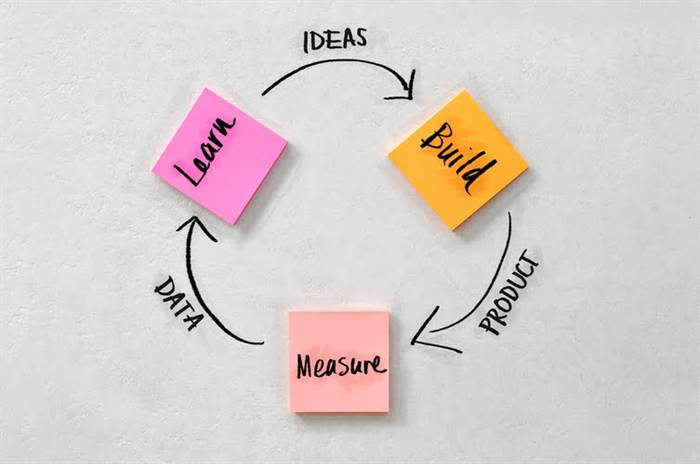The Scrumban group pulls the work objects from the 3-month bucket only, for the next round of software program iterations. The Kanban methodology at present in 2022 is used by software growth, advertising and sales teams across the globe for managing the creation and the supply of services. It has virtually no studying curve and permits groups to be flexible in manufacturing whereas not including pointless complexity to the method. Instead of someone pushing duties onto a team’s plate regardless of capacity, Kanban teams solely pull in new work from the backlog when they have accomplished objects already in progress. This pull approach might sound logical, but most workplaces function as push techniques.
- In the desk below, we’ll examine the similarities and the variations between Scrum, Kanban, and Scrumban so you can choose which one best fits you and your business.
- As for the restrictions, the concentrate on collaboration may be seen as a strength but it can also symbolize a downside.
- Any task measurement is welcome, however, in Scrum only the tasks that can be delivered in a selected Sprint are allowed.
- Leading to unnecessarily, time-consuming elements of an in any other case effective course of.
It helps to have a fundamental understanding of both methodologies earlier than making a call. Kanban is a great choice if you want to view the standing of many components of a project without delay, however solely give attention to a few duties at a time. Agile is best for teams that want to use “story points” instead of dates & times to set deadlines, and want to use retrospectives for fixed cycles of feeback. In Scrum, teams measure outcomes utilizing velocity, which is the whole variety of story factors accomplished in a sprint. Referencing story factors, as a substitute of setting deadlines primarily based on dates and times, helps teams only decide to taking over as much product backlog as they feel they will moderately deal with during a sprint.
This might embrace tasks that have strict price range or time constraints, or the place tasks should be accomplished sequentially. Sprints discuss with a fixed box of time during which Scrum teams purpose to complete an finish product of the highest possible quality. They’re crucial to chipping away at complex projects by breaking them down right into a sequence of smaller tasks. However, for Kanban, there’s no specific time when deliverables must be submitted.
Key Takeaways: Scrum Vs Kanban Vs Scrumban
It emphasizes flexibility over following a plan, and is commonly used for tasks that are met regularly with change. As typical of Agile frameworks, Scrum makes use of an iterative method to finishing tasks. Instead of delivering a project all at once, groups full and ship tasks in phases. Unlike Scrum teams, Kanban groups do not essentially require strict job roles. Priorities may shift, making it necessary to introduce new staff members to finish specialized tasks and cycle out those that have completed their portion of the project. Kanban’s quick and simple method to adaptability signifies that group members may change responsibilities quite than have everybody limited to a collection of static duties.
The estimated hours of planned work objects can’t exceed the size of the sprint. Instead, the work continues until the team feels that important worth is added to the outcome. Therefore, the staff decides when one iteration is over, and a new one can begin. Since the work is being done repeatedly, the Kanban board is steady too. It doesn’t reset after every iteration and as an alternative holds the work gadgets of the whole project.
Say you’ve been using the Scrum framework to deal with a quantity of advanced initiatives, however now you’re seeking to transition to a more effective, long-term strategy for steady tasks. Now the water has steadied, you probably can undertake Scrumban to slowly transition to Kanban by incorporating a quantity of key elements in your current processes. Release cycle time Kanban and Scrumban usually are not time-consuming when in comparison with Scrum. Both methods allow the staff to release gadgets as shortly as attainable as the group features time by skipping estimation sessions and recurring agile events. Pull system In each Scrumban and Kanban, the staff uses a so-called pull system the place tasks are taken one by one from the ‘To-Do’ listing. Time-based work Scrum and Scrumban are each time-based with recurring intervals of scheduled work.
Kanban is an anti-bottleneck system the place everybody keeps tabs on duties, guaranteeing there aren’t too many items trapped within the “in progress” state. The Kanban framework is greatest for defining a series of workflows and processes that may assist you to with continuous initiatives. With visual project management aids such as Kanban boards, you can more easily make clear the tasks in a project, and distribute roles and responsibilities accordingly. It often happens when part of the product is finished or when the planning trigger prompts. Either method, presently, the group sits down and fills the backlog with new duties to finish.
Abstract Of Scrumban Vs Kanban
Each column on the board represents a step in your workflow and every Kanban card represents a task or work merchandise. Today in 2022 there are completely different project administration methodologies and it could be hard to choose the best for scrumban boards you. In this text, we’ll clarify and evaluate the most generally used ones – Scrum, Kanban, and Scrumban. In Scrum, the team has the final say in committing to the Sprint Goal and the gadgets they’ll work on throughout a Sprint.

You can choose Kanban in case your group doesn’t have any strict deadlines and features can be launched when they are prepared. Kanban is healthier for duties that could be completed with out dependencies on different tasks. You can use this technique when the pace to market is the number one priority.
The 5 Best Planning Poker Tools For Online Estimation
Yes, there are a quantity of options available in terms of project administration methodologies. For example, there’s the waterfall methodology, which follows a linear path and often has between 5 or 6 totally different phases that depend on the deliverables provided by the earlier part. The lean project management methodology is geared toward reducing waste and delivering value in a short time period. Others that you simply may consider include excessive programming (XP), important path methodology (CPM) rapid motion development, Six Sigma or a hybrid of two or more of those methods. Scrum cadences are all about pace, whereas Kanban cadences give consideration to flow. Scrum sprints mix velocity with efficiency as the end of every expertise brings valuable information to make future sprints sooner and more practical.
If your stakeholders are looking for a fast and responsive system that focuses on quick deliverable turnaround times, Kanban could be the best fit. If they like a more structured system the place the need for enter is limited to post- or pre-sprint sessions, the Scrum or Scrumban frameworks can be better. The Scrum framework affords you plenty of flexibility and adaptability, which helps you to tackle all kinds of tasks — even those which would possibly be more probably to change over the course of time. The Scrum framework can be greatest for projects which may be inclined to change in scope over time.
The heart of Scrum is the Backlog which is very like an extended to-do record consisting of all duties, options and person stories required for delivering a services or products. The objective of every Sprint is to work at a sustainable pace to release a small, useful increment of labor – often within the form of a working piece of software. Scrum contains specific events geared towards helping groups replicate and adapt their work.
While Scrumban areas out planning and supply in Sprints or milestones, Kanban focuses solely on steady, optimal circulate. Kanban’s flow-focus means teams must proactively coordinate throughout workflow stages to establish dependencies. The backlog have to be actively groomed and prioritized to stop necessary items from falling by way of the cracks in the https://www.globalcloudteam.com/ continuous circulate. Work objects could be simply reprioritized or new pressing tasks added to the top of the backlog. Conduct common standup conferences for the group to debate blockers, establish dependencies, and update the status on the board. Team members pull work themselves as capability allows quite than having work assigned to them.

The important thing is that progress is constant, works in progress are restricted (for high quality control), and processes are constantly optimized. Don’t try to form your team in order that it matches the method; rather, take heed to your team and shape the method to fit your specific needs. The nature of agile is flexibility, no one says you have to stick to a minimum of one framework or methodology even if it doesn’t work. Take each one for a test run and evaluate your team’s sentiment, the quality of the final launch, and the speed by which it reached your prospects. Kanban is sweet for groups that are following the same course of time and time once more.
He can decide what to select from the 3-month bucket, which duties to schedule on the On-Demand Planning and how to prioritize them. From there the team members determine on their own the method to deal with and implement them. Scrumban combines the construction of Scrum with the flow-based methods and visualization of Kanban.
Once the planning trigger activates, the group sits down and plans work objects for the subsequent iteration. Team velocity is used to find out what quantity of tasks the team will be capable of complete throughout an iteration. Usually, the Kanban staff is a set of pros who can achieve the end goal collectively. Each staff member takes duties from the backlog based mostly on their precedence and specifications. Since the group drives the entire course of, there are not any defined Kanban roles. The entire team is responsible for planning, prioritizing, and attaining the tip outcome.
